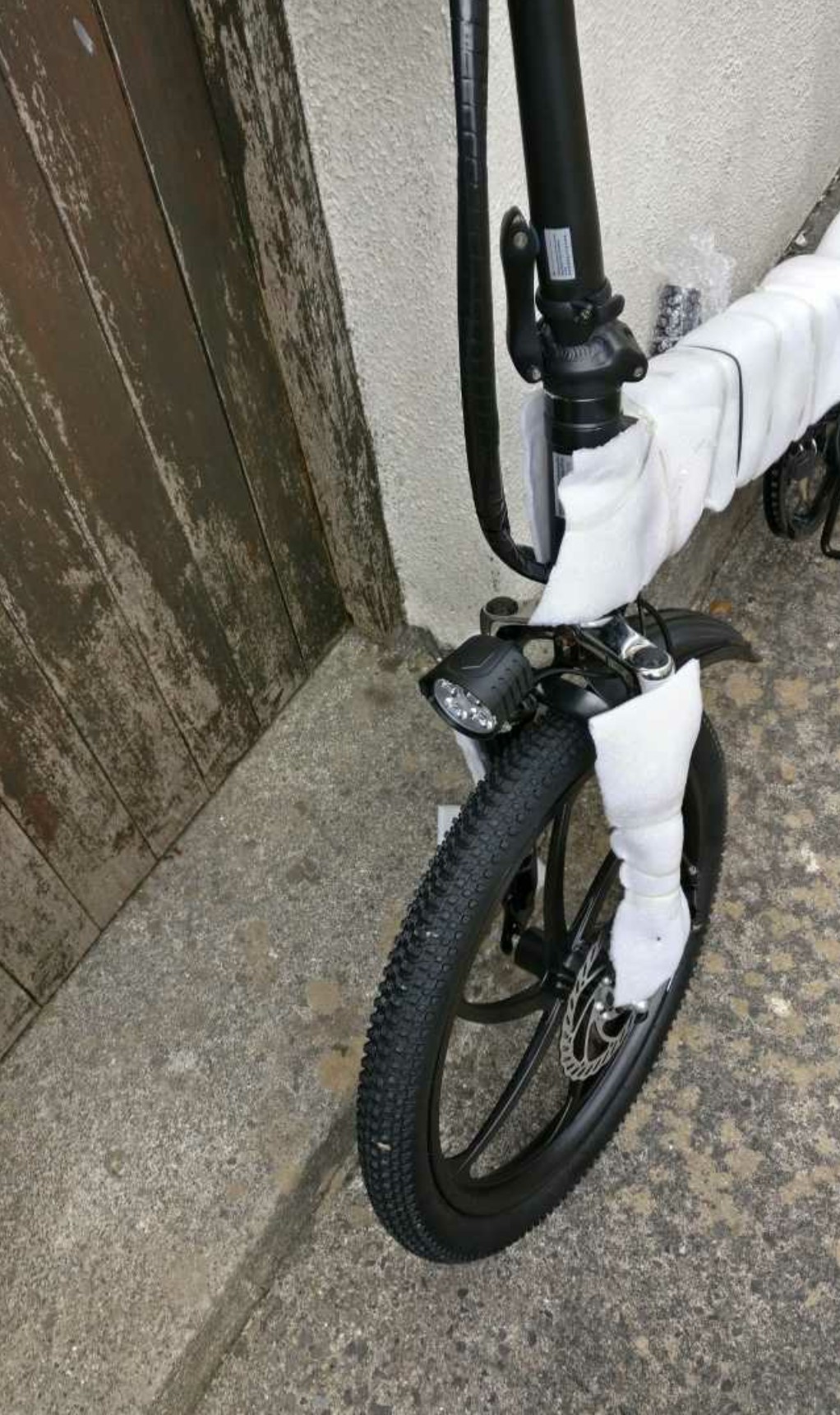
In my last blog post to you, I was just getting started as an e-biker. Now, I have slightly more experience with my eventually (and exhaustively) chosen model, the NAKXUS 20F039, the review of which I’m still working on.
Spoiler alert: my main conclusion is that it is very much a city bike, and while that’s great for an urban area, it’s not something to tackle on the wealth of terrain (and other general scenery) to be found around here.
Fortunately, there are other types of e-bike, even those of the mountain variety.
The Eskute Voyager is just one such of these, and the first of its kind that I’ve been able to try out*. In keeping with its category, it has a top-bar and 27.5-inch wheels: specs that should help it conquer elevations and slopes that I frankly wouldn’t have the confidence to tackle with my other 2-wheeled e-vehicle.
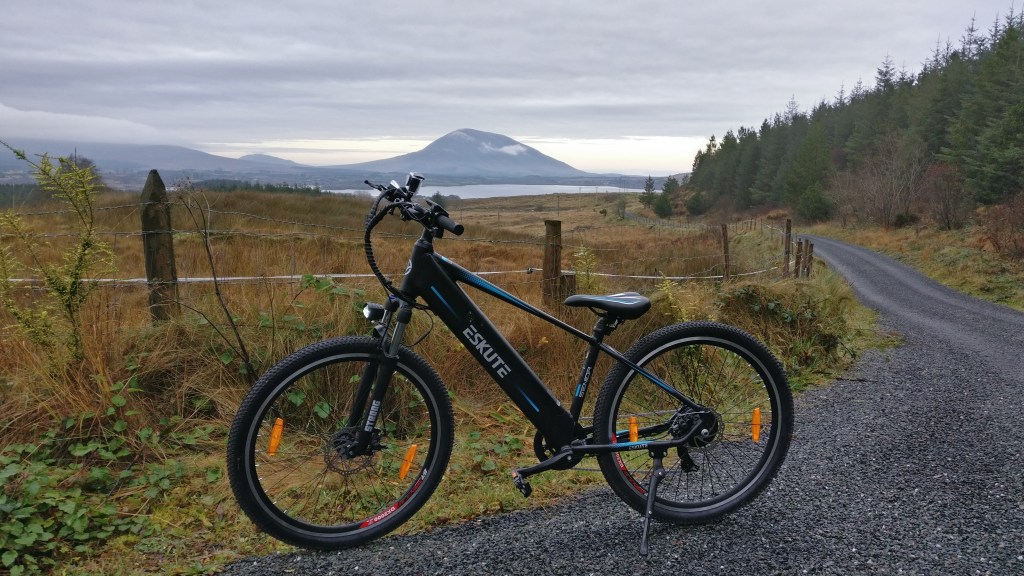
As a ~1.7m tall woman, I was admittedly worried that I would not be able to ride it comfortably, let alone get on it. However, it turned out neither was the case – although I did need to set the seat to its lowest point…as with every bike I’ve ever owned.
On that note, part of the seat post clamp was missing on unboxing the bike. This might have been a shipping mishap; in any case, the manufacturer did arrange for a replacement to be shipped immediately in being informed of it. It did take about 2 weeks from the bike’s arrival to show up, however.
The Voyager does have Shimano 7-speed gears; however, the ease of getting up to speed using the motor renders it unnecessary the vast majority of the time. Their use seems to require seriously complex terrain, in fact.
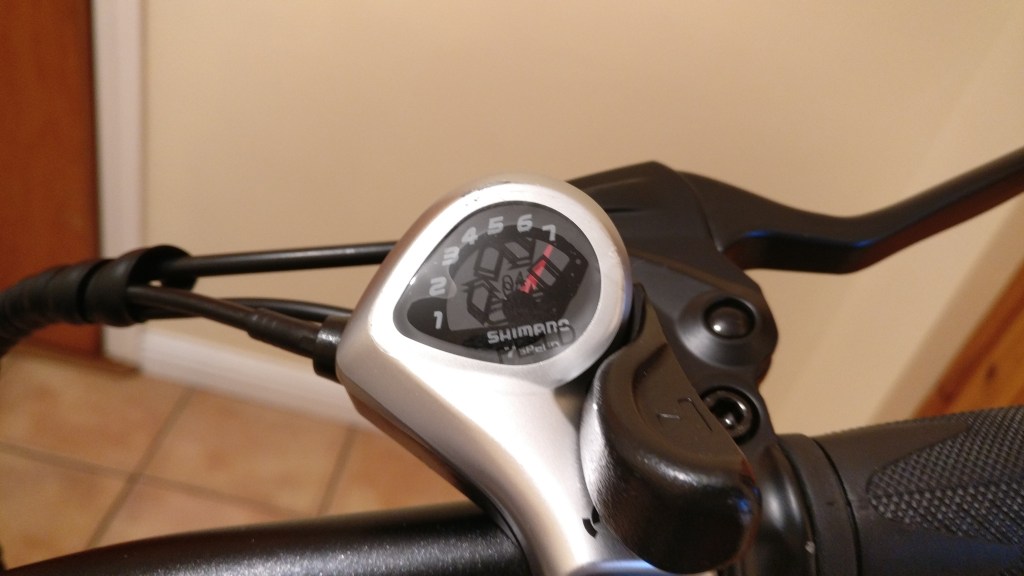
Therefore, its advantages as a vehicle are clear enough: it can go fast, thus making you feel like a champion racer regardless of your level of fitness and recent practice as a cyclist. In that way, it can feel like a bike for those who hate cycling, which also goes for my other e-bike.
Unboxing & First Impressions
On the subject of the unboxing, it went fairly smoothly. The Eskute Voyager came in a box about the same size as that of the NAKXUS: this, then, may be more or less standard for e-bikes. It turned up well-padded without major defects, dents or scratches, which is always something one gambles on when ordering an e-bike online.
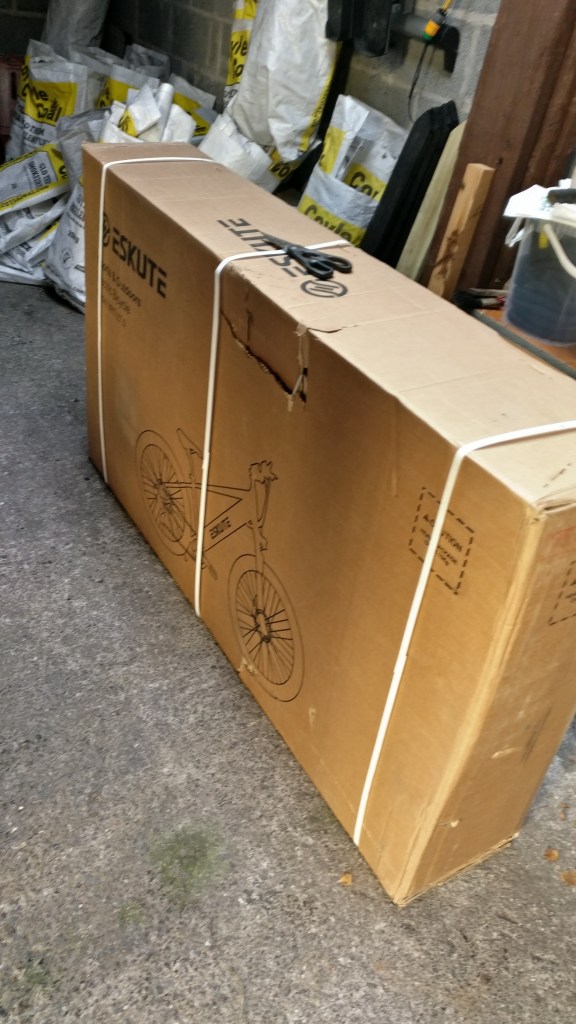
The bike needs its front wheel installed, which I had never done before. However, I found it surprisingly easy to do (mostly thanks to the instructions provided in the box and in the OEM’s handy YouTube tutorial).



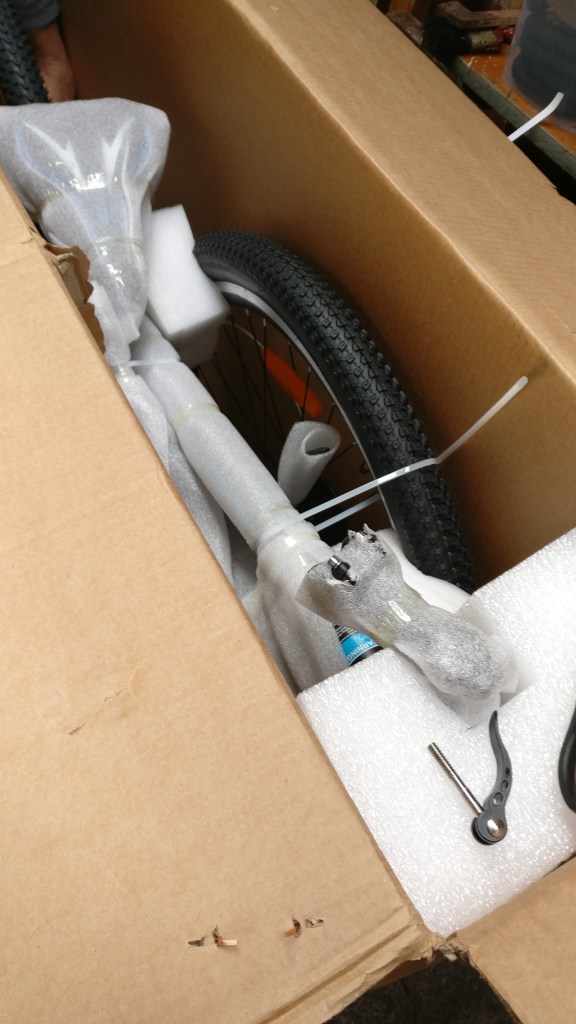
The Voyager also needs some standard maintenance and completion steps prior to use, pedal installation, front-fork assembly/alignment and general bolt- and nut-tightening included. Again, these are fairly easy to do with the online tutorials. Mudguards are also thrown in, which as we now know, is an important plus when buying any kind of e-bike.

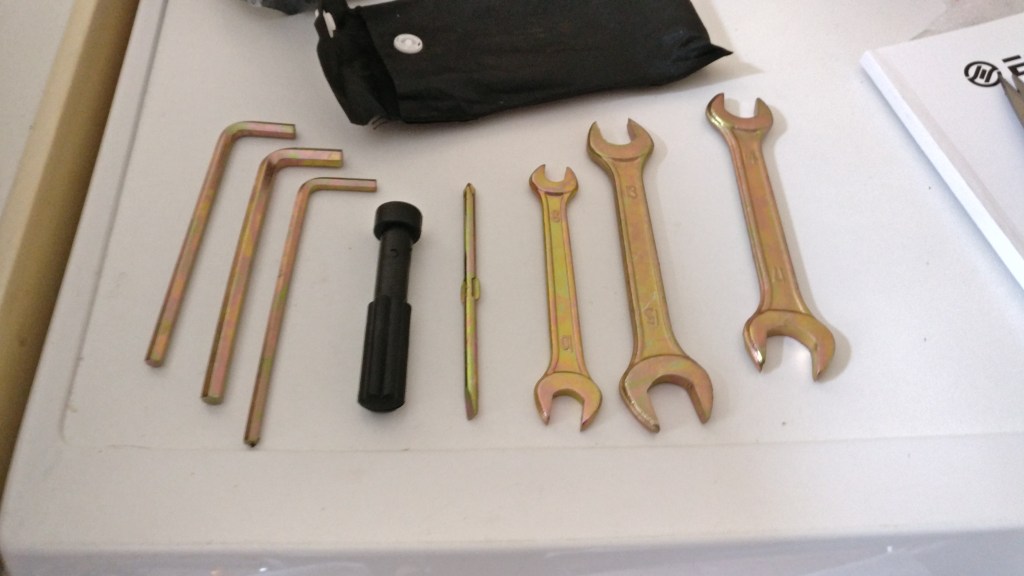
There is also a throttle, which comes detached in cases of their not being entirely legal in some jurisdictions. Nevertheless, I felt compelled to install it simply to complete the bike, and to stop its plug, which protrudes from the cable-management rigging on the handlebars, sticking out there.
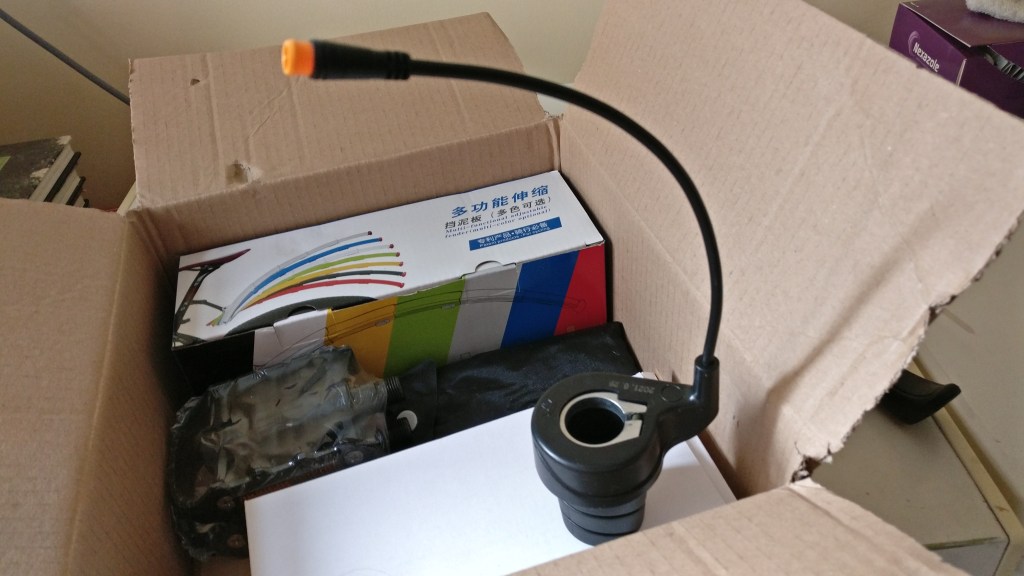
However, I have to admit I’ve found this part of the assembly much more difficult than indicated, and have left it off for now. I will update if and when I can overcome this issue and do some fully motorized mountain biking.
Design
The Eskute Voyager has a convincingly mountain bike or MTB build, and thus has a top-tube – which shorter riders might find a little challenging in mounting it, admittedly. Its battery is built into the down tube, which is clever, even if it makes it slightly harder to remove (in a way that also risks scratching the paint).




This is fine by me, as it makes it more difficult to identify it as an e-bike from a distance, which is valuable in terms of security. Then again, its keyhole is somewhat of a giveaway. It is mounted next to the battery, and only functions to remove it, rather than for ignition as in some other bikes. It comes with 2 keys, issued with a unique number to match its corresponding Voyager.
It is an e-bike, though, which means it is more fragile in some ways compared to a regular bike. I wouldn’t take it out in heavy rain, although it has been caught out in very mild drizzle without any ill effects. It’s also just unadvisable to put it in the most extreme conditions and terrain: it’s just not worth the risk of damage. Those cool tricks (or trials) you’ve just seen online? – forget those; durability aside, the battery and its placement really add to its rigidity, meaning it’s no kind of BMX replacement.
Despite all of the caveats of above, I have to admit the Voyager gives the impression of defying them all. Its mostly black chassis not only shows its logos and branding off to good effect, but gives an air of rock-solid build with its all-metal build. It actually weighs about the same as the NAKXUS, yet is harder to lift and manipulate as it is not foldable.
The bike’s wheels are 6R Rainbow DX3000s, which I’ve never encountered before. However, they must be good as I’ve tackled some considerably gravelly slopes (inadvisable, in hindsight) without the merest sign of a puncture thus far. I also like its treads and have found them more than grippy enough.

It also has a KMC Z51 rust-proof chain, which similarly hasn’t required a second of thought since the unboxing. The bike comes with a saddle that matches its mainly black and electric blue colour-scheme which I quite like, which is amazing as I normally hate default saddles.
Its headlight is an inbuilt white LED (yet another typical advantage of buying an electric model) that might be a just little less bright than that of my other bike.

Unfortunately, there is no rear LED, just a reflector. The Voyager makes up for that somewhat with a horn rather than a bell, which I prefer. Then again, the location of its button (on the display console close to the left handlebar) makes it liable to going off accidentally when one brushes it by accident when moving their hand from the bar to the display’s buttons. There is a slight learning curve in avoiding that.
Despite those slight hiccups, it is frankly easy to forget the Voyager has electronic components sometimes. On the other hand, there is an easy reminder in that it, of course, has a motor. This rear-mounted 250W geared hub will make whirring noises on the road or trail, as any other will. They are easy to get used to, although its sound effects get audibly more reluctant as the battery runs down.
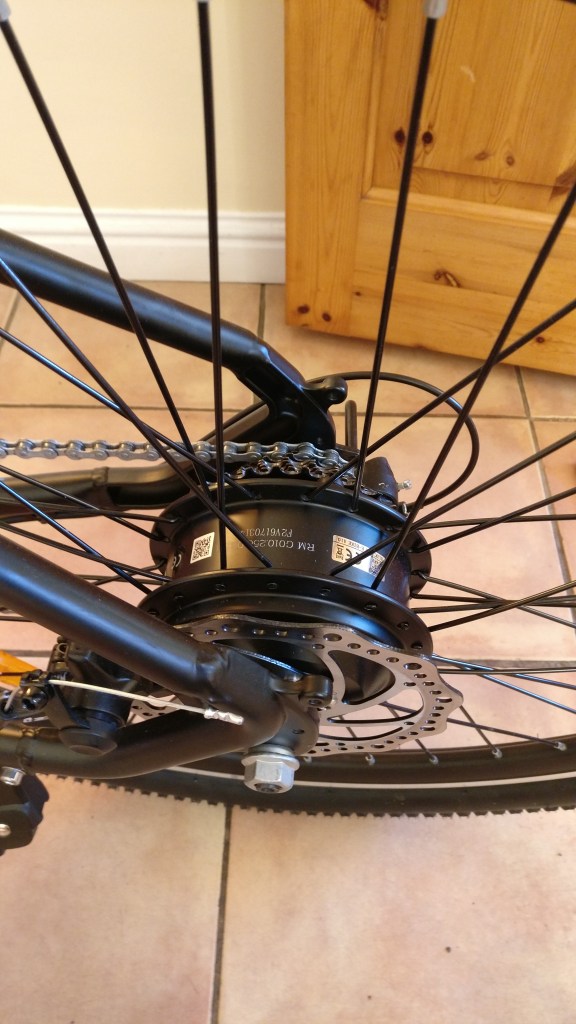
I have to say I am pleased with the Eskute’s design and durability thus far. I’m not saying I would like to see it sliding down a rocky incline, but I am happy to take it off the roads as and when the mood takes me.
It has in fact not objected in any way regardless of where it has been ridden to date. I’ve even dragged it thoughtlessly through long grass looking for better photo angles, and not found anything caught in its chain or anywhere else afterward.

This would certainly not be the case with the NAKXUS: its derailleur is far closer to the ground, for a start.
Riding Experience

When it comes to riding the bike, the first thing that struck me was how quickly it can come up to speed. It can easily reach its rated top speed of 25km/h (according to its display, at least) within just a few minutes of cycling – in fact, I’ve seen it touch 30km/h (which may give you an idea of the elevation we’re dealing with!). This of course makes me all the more thankful that the brakes have proven excellent so far.
The Voyager’s pedal assist system (or PAS) really does make it far smoother and easier to get up to speed. It, like my NAKXUS, has 5 PAS stages, although that of the Voyager seems to be more powerful – something I also appreciate on some of the local hills.
On the other hand, this Eskute is indeed a full-sized mountain bike, which means I do find it slightly harder to pedal without the motor.
The bike also seems more stable and less liable to wobble at speed than my NAKXUS bike. In the other hand, the motor also seems to be a little louder and more obtrusive, especially in demanding terrain.
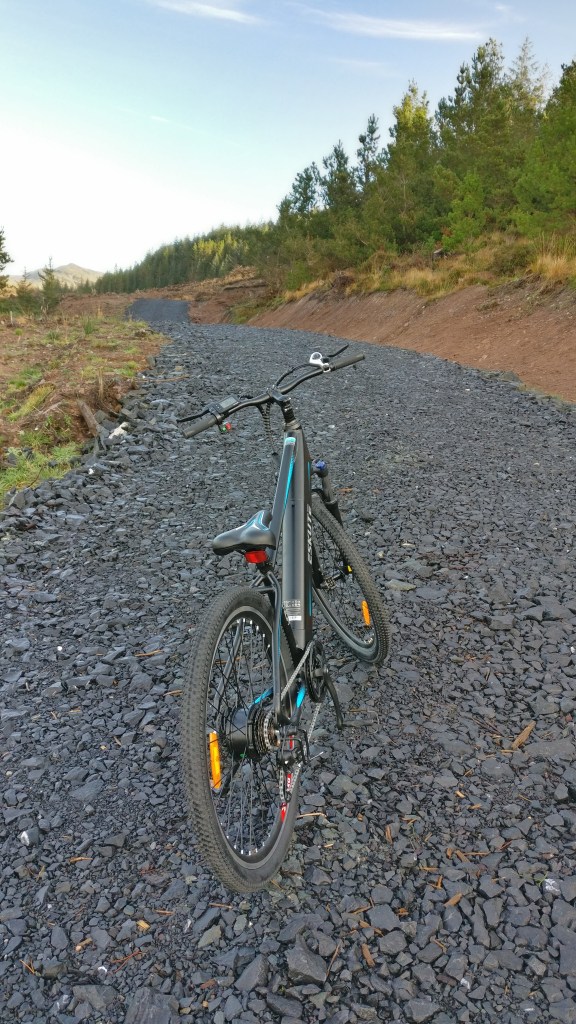

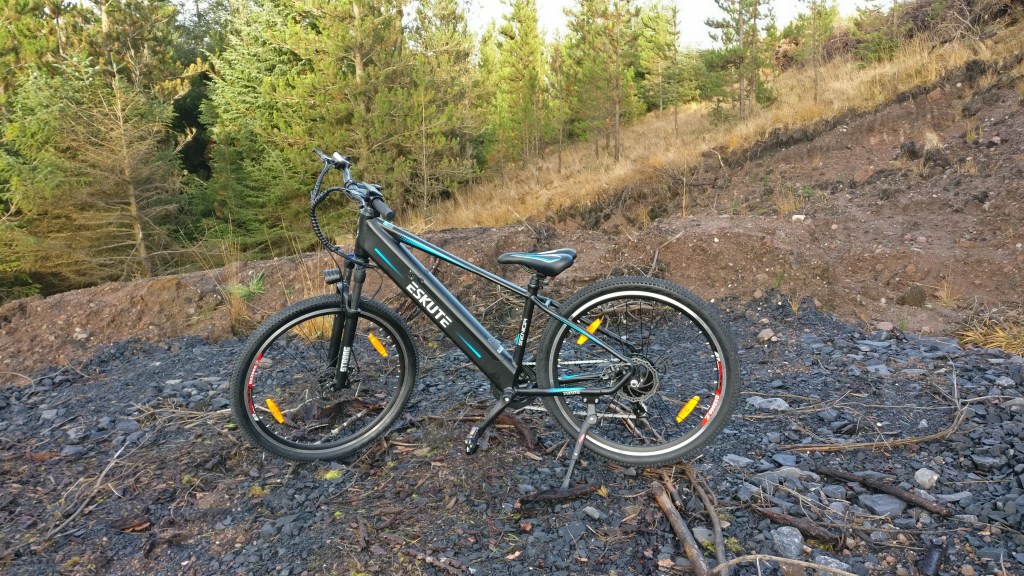
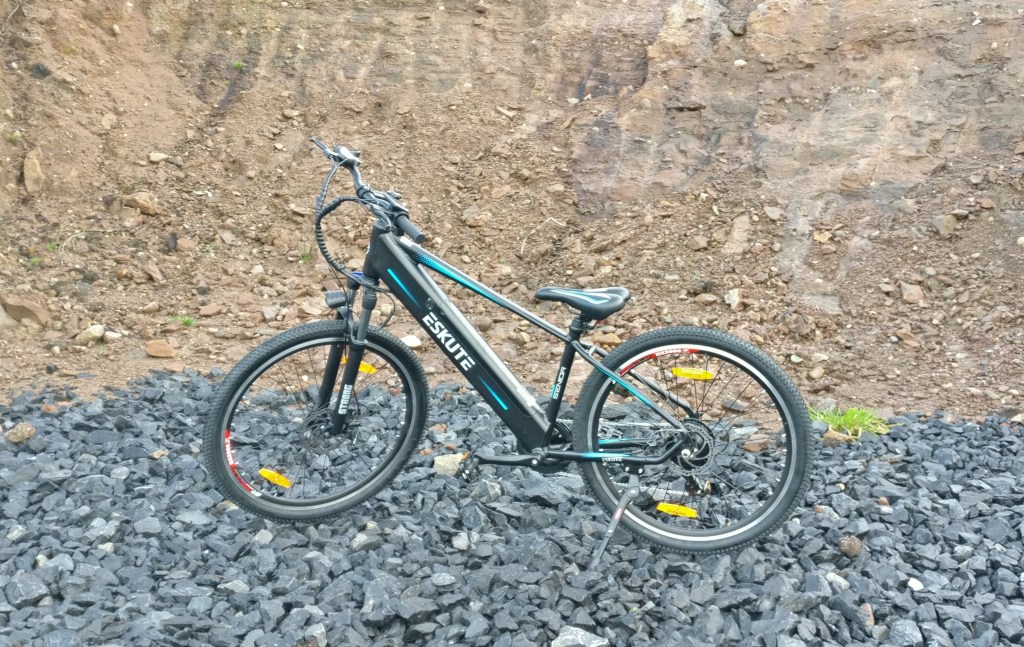
Then again, its easy starts only seem possible on the flat or, better, with a downward slope. This is because at least 3 turns of the pedals seem to be required to get the motor to kick in. Sometimes, this amount seems even more arbitrary, to be honest.
Nevertheless, any difficulty in getting going is worth it, as the Eskute Voyager is a joy to ride – and on nearly any terrain too. Its mountain bike nature proved its worth, especially on the equally steep roads that exist in profusion in this area.
The Voyager even boasts front adjustable suspension, the benefit of which can really be felt on more challenging trails. I am more confident running over potholes – not to mention the rough stabby gravel that have shown up in some since the last time I used them – than I would be on my other bike.
All in all, I found the Voyager easy to ride, even though it has a taller and larger frame than I’m used to. Gear changes are also smooth, and there is a standard shifter here (not the case with my other bike), although they become redundant in some situations thanks to the efficiency of the PAS mode, especially on the road.
Range & Charging
The bike arrived with a battery level of about 80% (or 4 out of 5 bars as per the display), and still had 2 after 13km worth of initial testing. It racks up an average of 58 kilometers (km, or ~36 miles) per charge: less than its 44-mile (~70km) estimated range; therefore, its range may vary based on conditions and riding style, much like many other electric vehicles.
The 450 watt/amp-hour (W/Ah) battery can be charged while housed in the bike, or removed and charged separately. This is a feature of many modern e-bikes, and makes it easier to keep powered regardless of where your outlets are. Then again, as I’ve mentioned, getting it out of the down tube can be awkward, as can putting it back in again.
Once the battery is out, there is the matter of removing the waterproof port cover up to connect the charger. It actually does take quite some prying, although that is a small price to pay to ensure ingress-protection. It has yet to loosen up with repeated use, which is just fine by me.
The charger itself could actually remind you of a conventional laptop power brick, and as such comes in 2 parts with a large rectangular transformer on the end of one. It is also, in fact, the exact same one that came with my NAKXUS E-Bike, so I was familiar with it when it showed up.

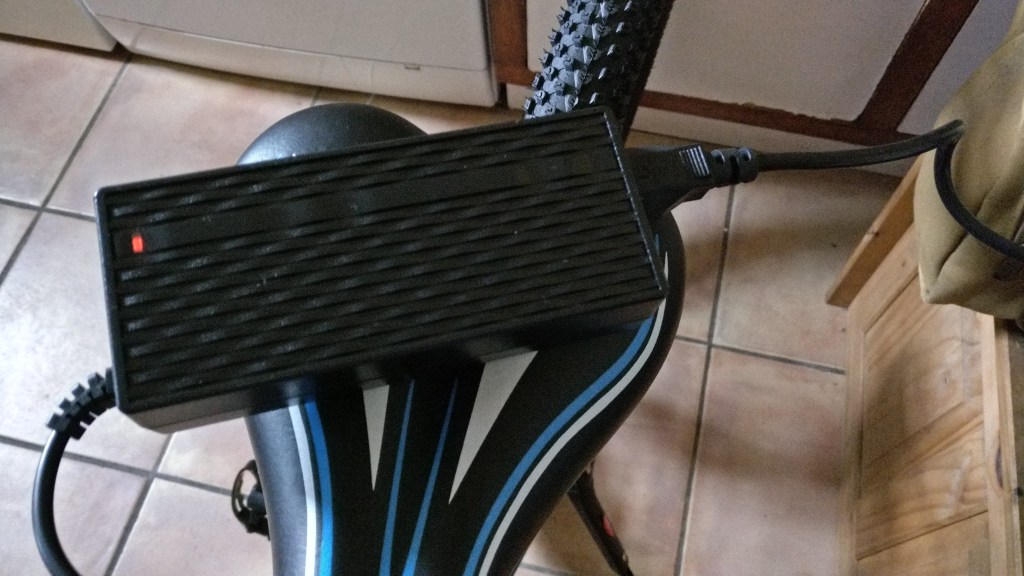


It also came with an adapter for this region, and you can never have too many of those.
There is a small light on the transformer that turns from red to green once the battery is full, and that’s it. If you want information such as how much charge is left or how much charging is left to do, you need something like a gauge on the battery itself, which is not present here.




The bike’s handlebar-mounted display is more helpful when charging the battery in the bike. It is fairly intuitive, acting as a speedometer and trip computer as well as a battery-level tracker. There are 3 buttons to control it, with an interface that would quickly become familiar even to anyone without an e-bike.

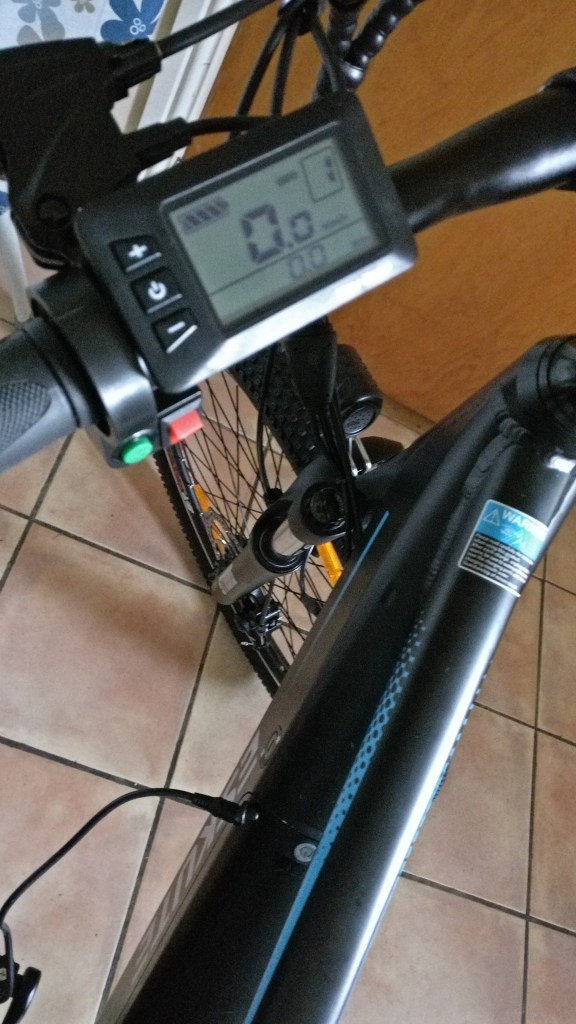
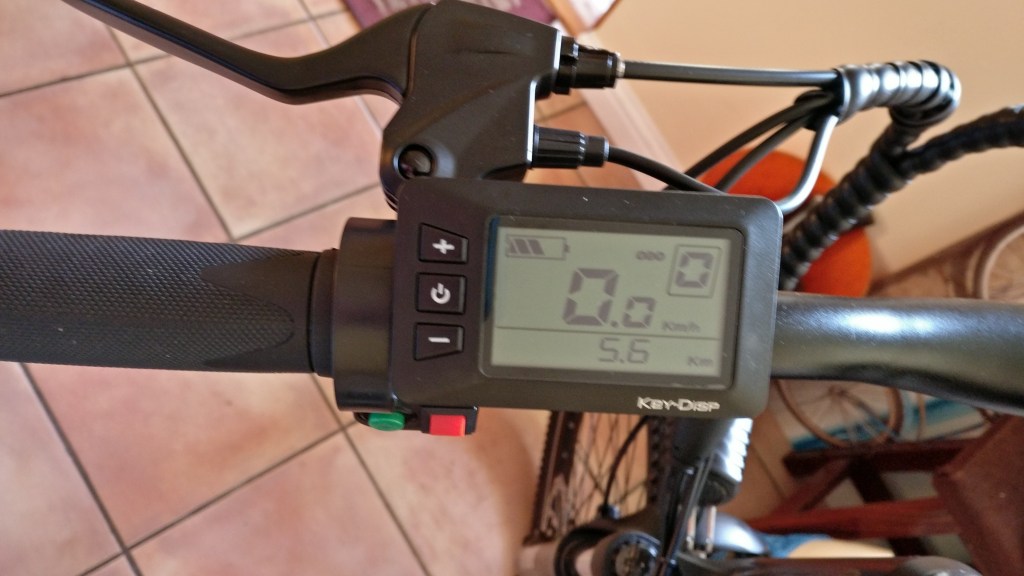
Despite this, it seems to be a little inaccurate sometimes: I’ve turned the bike off with 1 bar left, then turned it back on the next day to find it has somehow turned back up to 2. Similarly, it can magically round itself back up to 3 bars from 2 overnight, and so on. It’s mildly frustrating and makes it harder to know when to charge it.
The 36V battery is rated to charge at 12.5 amp-hours (Ah), and typically takes 5 hours to charge off my standard grid.
Conclusion
In all the weeks I have had with it, I have found the Eskute Voyager to be a solid, high-quality bike. It has shown itself to be equal to the inclines for which its form-factor is made, not to mention the roads that seem intent on mimicking them. I am particularly happy with its speed, and with the assurance I feel at high speeds – it’s definitely fun to go down the steepest hills with this thing, which is, of course, mostly the point. I have to say I genuinely look forward to riding it, winter weather, occasional 0⁰C wind-chill notwithstanding.

I have still not been able to get the exact range specified on its website; then again, I have not really experienced any anxiety in this area, and have only had a completely flat battery once. In fact, it can feel impossible to run down sometimes.
I’m also happy with how this bike looks: I haven’t had a chance to take it into town yet, but I think it would make as good an impression in an urban area as well as my second bike does.

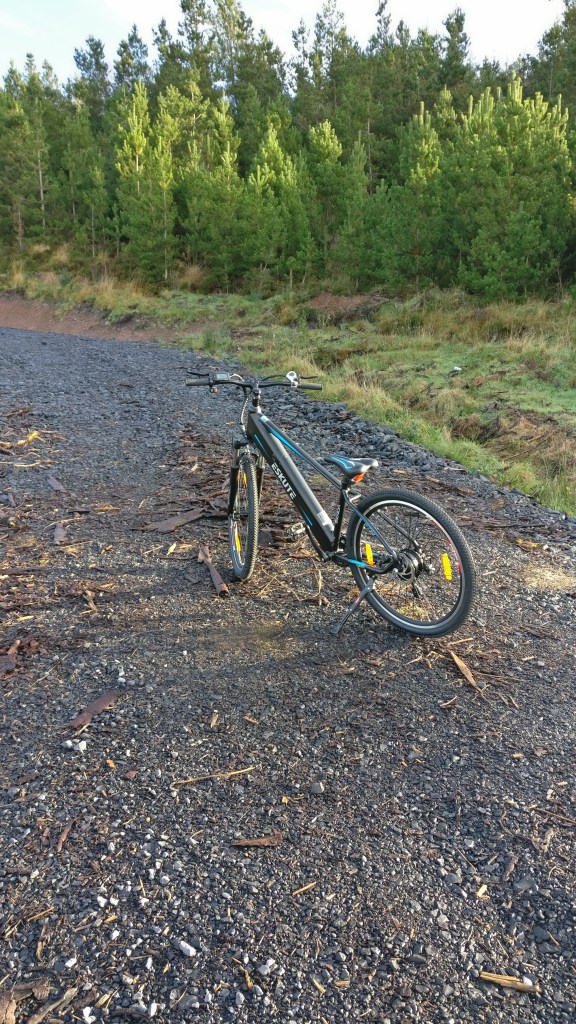
My only main points of reluctance in doing so is that the key-hole and battery button make its electric nature more conspicuous (I don’t know about you, but I am compelled to disguise those with tape), and the inability to immobilize it by default. Therefore, it would go best with a good lock to stop just anyone riding off with it: something to think about when buying one.
All in all, the Eskute Voyager might be a good option for those who want an e-bike to cover all they might want to do with it, from some off-roading fun to stylish cruising around town. It is available from its brand’s website for £999 – although it is possible to get £50 off this price using the code AFGF5072 right now.
*Disclaimer: I received this item from Eskute free of charge for the purpose of testing and review.



